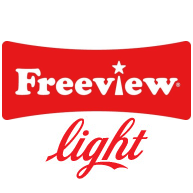In the analogue days the UK had a 4 channel plan which mandated all four channels to be everywhere. Then late in the day a 5th channel was authorised which could only generally be added to the main transmitters. Many of the relays are in mountainous areas and there was not the spectrum available. Also coastal regions did not get 'five' due to possible continental interference.
Then digital came along with 6 muxes at all the main transmitters and also planned for the relays once analogue was switched off. But it was not mandated for all channels to be available everywhere. So the commercial companies decided it was not financially viable to pay for their services at the many hundreds of small relays.
Fast forward and the mobile companies lobbied for spectrum in the UHF TV band and governments including the UK sold them ch 61 to 69. Not satisfied with that they lobbied for more and were sold ch 50 to 59. That leaves us 21 to 49 or 29 available channels. Whether or not we could get 6 muxes everywhere is a moot point if the commercial companies are not prepared to pay for them.
A solution set up by the PSB companies was a satellite service called Freesat which provides most* of the terrestrial channels and more to anyone willing to install a small dish and satellite receiver.
* Most. What is not carried are the local TV services setup in some areas.
We also have rebroadcasting of radio channels on the same frequency in tunnels.
Australia has 5 TV "Channels" or "service providers", 3 Commercial, the ABC (Australian Broadcasting Corporation) and SBS (Special Broadcasting Service - with many extra "ethnic" programs - apart from the main program.
(The latter two are Government "Funded" - at least, partly.)
There are also several (low powered) "special interest" TV Channels in some Capital Cities but these are to be "phased out" and shifted to the WWW.
There are "multiple programs" available on all of these 5 digital "Channels" and last night I counted 37 "programs" available in Melbourne - including 5 HD channels, which repeat 5 "SD" channels - or the other way around.
(Many of the "extra" programs on the "Commercial" channels are just continuous advertising.)
The ABC and SBS also have their "Radio" programs available via their Digital TV "services"
All these programs are available virtually everywhere that one can receive a "decent" TV signal of any kind in Australia.
The "Commercial" Channels change the "Adds" in the "local" areas where they re-transmit - just like the "networks" in the USA.
(Because these "advertising blocks" are in "Three Minute" or "30 second" periods, it is easy to record such programs and "skip" over the "commercials", if one has an appropriate PVR.")
(Obviously, there are
VAST areas of Australia where one cannot receive
any terrestrial TV (or Mobile 'Phone) signal - but that is another story.)
"Satellite TV" in Australia is (largely) provided
only by the Australian Communications and Media Authority (ACMA,) which provides "Viewer Access Satellite Television" (VAST), if you live in an area with poor free-TV coverage.
(VAST seems to be a singularly appropriate name !)
VAST is funded by the Australian Government and gives people who may not be able to receive "regular’ TV services access to free-to-air TV or radio services by satellite.
Hence, wherever you live or travel in Australia, you will be able to receive virtually all of the TV programs which you could receive in the nearest Capital city.
Of course, there will be an extra cost for the equipment to receive "satellite reception" in the more remote areas.
Certain "media interests" have "programs" which are available, via subscription, on the WWW/NBN
Australia has the National Broadband Network (NBN) which
was intended to provide "high speed" optic fibre connection to every household in Australia.
Certain governments "watered down" this objective and the NBN is now less than "high speed" in many places.
However, it is being up-graded, at an eventual cost of much more than it would have cost to install optic fibre cable (where practical) in the first place !!
Charging "Licence Fees" for a "Public Broadcasting Service" is (obviously) a "Poll Tax", since it is levied at the same rate on the "rich" and "poor" - except (possibly) "pensioners".
In Australia
"All licence fees were abolished in
1974 by the
Australian Labor Party government led by
Gough Whitlam on the basis that the near-universality of television and radio services meant that public funding was a fairer method of providing revenue for government-owned radio and television broadcasters.
The ABC has since then been funded by government grants, plus its own commercial activities (merchandising, overseas sale of programmes, etc.)
SBS is partly government funded but also uses "Commercial Sponsorship""
In New Zealand
"The public broadcasting fee was abolished in July 1999. NZ On Air was then funded by a direct appropriation from the Ministry for Culture and Heritage."
(
https://en.wikipedia.org/wiki/Television_licence)




